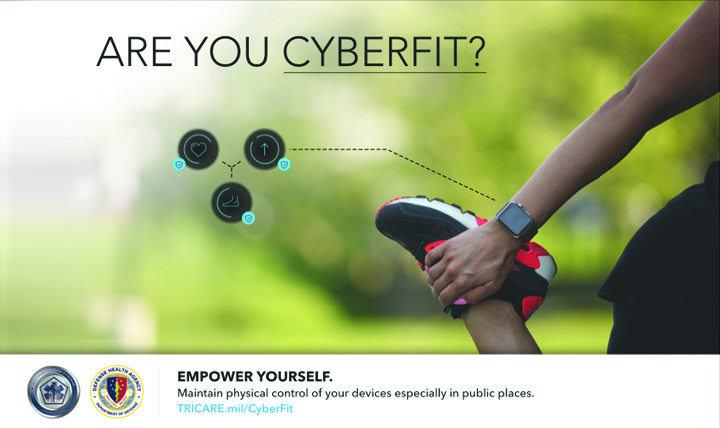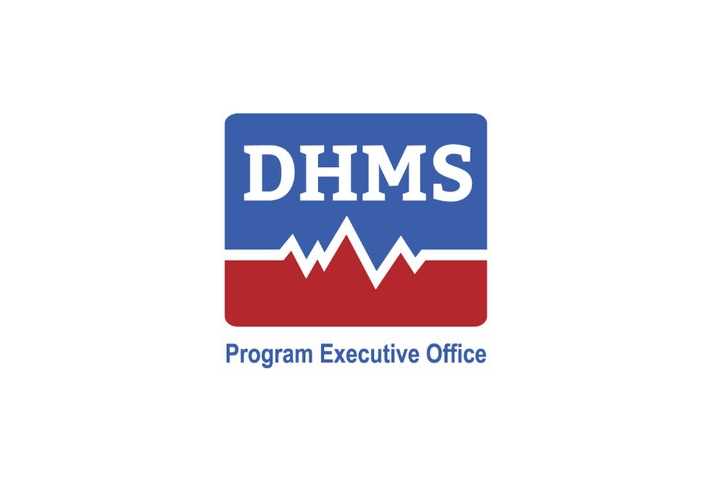
Army medical device cyber team balances benefits and risks of technology

An Army medic positions a patient for a CT scan, which helps radiologists diagnose different types of disease and injuries. Medical devices, such as radiology imaging systems, must now go through a cybersecurity validation process in order to connect to military networks (U.S. Army photo by Staff Sgt. Evelyn Chavez)
Access to advanced medical care directly supports the readiness of the Army's Warfighters by ensuring troops are fit and healthy on and off the battlefield.
Modern medical devices help the Army provide and sustain essential Soldier support; however, this same technology also poses an inherent risk.
Almost all newer medical devices contain some type of computer technology. If a medical device doesn't connect directly to a network, it is remotely or wirelessly accessible. These factors make medical devices potentially susceptible to intrusion from a hacker.
Experts warn hackers could exploit technology vulnerabilities within medical devices to either harm patients, steal private health care information and data, or gain "back door" entry to the wider DoD network.
At the U.S. Army Medical Materiel Agency, a subordinate organization of the U.S. Army Medical Research and Materiel Command, a team of medical technology experts comprise a cybersecurity cell created in early 2017. This team, part of the Integrated Clinical Systems Program Management Office, focuses on ensuring medical devices used by the military comply with strict DoD cybersecurity standards.
"The frequency and severity of cybersecurity attacks against the medical community will continue to rise until medical device manufacturers make security a top priority," explained USAMMA's Medical Device Cybersecurity Chief Andrew McGraw.
McGraw said that simply not connecting medical devices to the network isn't the best solution. Most modern medical devices, such as computed tomography (CT) scanners, are designed to connect to hospital networks. Network connection allows clinicians to access previous test results or upload images directly to the patient's electronic health records.
To maintain those capabilities, McGraw and his team work to ensure each medical device passes a robust security certification process to reduce the security vulnerabilities of commercially developed medical devices purchased and used by the Army.
"We believe in taking a proactive approach to cybersecurity," said McGraw. "We work with medical device manufacturers to reduce cybersecurity risks, so we can continue to leverage advanced medical technology."
To protect the network, DoD officials enforce strict cyber standards on all information technology. Medical devices, however, are not "information technology," explained McGraw. Rather, they are "medical technology." It is a subtle yet significant difference.
Information technology includes computers and supporting equipment designed to be controlled by the central processing unit of a computer, software, firmware and similar procedures, services and related resources.
Medical technologies are single purpose systems intended for use in the diagnosis of disease or other conditions, or in the cure, mitigation, treatment or prevention of disease.
Understanding this difference is important, said McGraw, because Federal Acquisition Regulation 2.1 excludes medical equipment from being classified as information technology. However, often medical technology is still held to the same strict standards as IT.
McGraw said that cybersecurity in health care delivery must be a balancing act. Too strict of a security requirement results in the continued use of antiquated and technologically outdated medical devices. Too lax of a security requirement results in greater risk.
"The requirement to secure the network and patient data needs to be weighed against the medical mission and the ability to provide best in class medical care to the Warfighter," McGraw said.
One process that helps the Army navigate through that balancing act is the Risk Management Framework process. The RMF approach to security control considers effectiveness, efficiency and constraints due to applicable laws, directives, executive orders, policies, standards or regulations.
In 2014, the DoD began adopting RMF as a replacement to the DoD Information Assurance Certification and Accreditation Process. Army networks began getting Authority to Operate (ATO) under RMF in 2016.
By 2017, the Army received ATO under RMF for its first medical device – a portable digital radiography system designed for use on the battlefield.
"This was a huge win for the Army, USAMRMC, and USAMMA," said ICS Project Manager Terri Pryor, who manages the medical device cybersecurity cell. "However, it is not a quick, simple or low-cost process."
Under current policy, RMF is a mandatory process for all medical devices on the DoD network, which includes not only new purchases but also all medical devices already in use. Pryor and others are concerned that the current process could create a significant issue for military medical care – forcing some devices off the network. Additionally, if a device can't pass the process, the Army might have to replace medical devices – which would otherwise be in good working order – before the end of their lifespans, which are typically 10 - 12 years.
"Is cybersecurity of medical devices important? Absolutely. Is there possibly a more streamlined approach to achieve our end goals? We think so," said McGraw.
To that end, USAMMA's medical device cybersecurity cell has been exploring the possibility of a "black box" solution that they believe could greatly reduce the number of security steps they have to take to gain ATO under RMF. The solution they are exploring works through a process called microsegmentation, which would allow an organization to isolate mini-networks within the larger network.
"Traditional security firewalls work like a fence to protect critical assets. But hackers have gotten pretty good at defeating these perimeters," said McGraw. "With microsegmentation, instead of one fence, we would have hundreds or thousands of smaller fences."
McGraw explained that actions such as running vulnerability scans or pushing IT updates on medical devices while they are in use could shut them down and affect patient care. Experts are also concerned that some security patches, designed and tested for DoD computers and not medical technology, could cause medical devices to malfunction.
"We don't just look at this from the perspective of protecting the network because we have to consider the potential impact to patient care," said McGraw. "So, in many ways, we have to protect the network from the device and, at the same time, we have to protect the device from the network."
The "black box" solution is one of many solutions being explored by McGraw and his team, who work closely with network security experts throughout DoD and the Defense Health Agency. While no specific solutions has been agreed upon just yet, the team remains focused on their mission.
McGraw added, "We take great pride in knowing that the work we do helps put life-saving tools into the hands of Soldiers, ultimately saving lives."
Disclaimer: Re-published content may have been edited for length and clarity. Read original post.
Cyberfit Family Crossword Puzzle 2018
Publication
11/7/2018
This crossword puzzle provides tips to keep everyone in your family safe online in cyberspace
Cyberfit family: Making cybersecurity understandable for all ages
Article
10/30/2018

Protecting the homefront against cybersecurity issues
PEO DHMS celebrates National Health IT Week
Article
10/19/2018

Leaders and staff from the PEO DHMS shared their stories about why health IT is important
DHA IPM 18-016: DHA IPM 18 016 Medical Coding of the DoD Health Records
Policy
This Defense Health Agency-Interim Procedures Memorandum (DHA-IPM), based on the authority of References (a) and (b), and in accordance with the guidance of References (c) through (s): • Establishes the Defense Health Agency’s (DHA) procedures for centralized oversight, standardized operations, and ensured quality and performance for the coding of DoD Health Records. • This DHA-IPM is effective immediately; it will be converted into a DHA-Procedural Instruction. This DHA-IPM will expire 12 months from the date of issue.
- Identification #: 18-016
- Date: 10/19/2018
- Type: DHA Interim Procedures Memorandum
- Topics: Technology | Military Health System Electronic Health Record
DHA IPM 18-015: Cybersecurity Program Management
Policy
This Defense Health Agency-Interim Procedures Memorandum (DHA-IPM), based on the authority of References (a) through (c), and in accordance with the requirements of References (d) through (y): • Establishes the Defense Health Agency’s (DHA) procedures to implement and maintain a DHA Cybersecurity Program for the Military Health System (MHS) to protect and defend DHA information and Information Technology (IT). • Is effective immediately; it will be converted into DHA-Procedural Instruction (DHA-PI), “Cybersecurity Program Management.” This DHA-IPM will expire effective 12 months from the date of issue.
- Identification #: 18-015
- Date: 10/17/2018
- Type: DHA Interim Procedures Memorandum
- Topics: Technology
Encryption Wizard Info
Presentation
10/15/2018
Encryption Wizard (EW) is simple, strong, Java-based file and folder encryption software for protection of sensitive information, such as FOUO, PII, CUI, and Privacy Act data. This Presentation provides complete details about EW.
October 2018 Webinar
Presentation
10/15/2018
October 2018 Webinar
October 2018 Post Test
Presentation
10/15/2018
October 2018 EDI RX Claims Overview
Presentation
10/15/2018
October 2018 CVS Caremark Electronic Billing Process
Presentation
10/15/2018
DHA IPM 18-013: Risk Management Framework (RMF)
Policy
This Defense Health Agency-Interim Procedures Memorandum (DHA-IPM), based on the authority of References (a) through (c), and in accordance with the guidance of References (d) through (ac): • Incorporates cybersecurity strategy, policy, awareness/training, assessment, continuous monitoring, authorization, implementation, and remediation. • Aligns with the Deputy Assistant Director, Information Operations (DAD IO) J-6/Chief Information Officer’s (CIO) key concept of increasing cybersecurity of Defense Health Agency’s (DHA) Information Technology (IT); therefore, robust risk assessment and management is required. • Encompasses lifecycle risk management to determine and manage the residual cybersecurity risk. • This DHA-IPM is effective immediately; it will be converted into a DHA-Procedural Instruction. This DHA-IPM will expire effective 12 months from the date of issue.
- Identification #: 18-013
- Date: 10/10/2018
- Type: DHA Interim Procedures Memorandum
- Topics: Technology
Cyberfit Poster: Military Family Readiness 2018
Poster
10/5/2018
This poster urges military personnel to teach their children online safety.
Cyberfit Poster Navy Family 2018
Poster
10/5/2018
This poster urges Navy personnel to teach their children online safety.
Cyberfit Poster Think Twice 2018
Poster
10/5/2018
This poster urges military family members to think twice before posting something online.
Cyberfit Poster Guard Your Cell Phone 2018
Poster
10/5/2018
This poster urges military families to keep an eye on their cell phones, as anyone could take them, even their dog.






















.png)









No hay comentarios:
Publicar un comentario